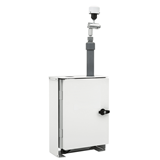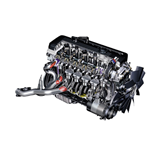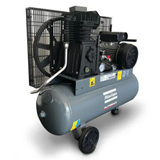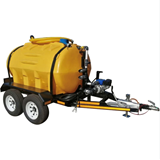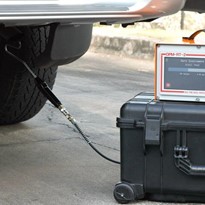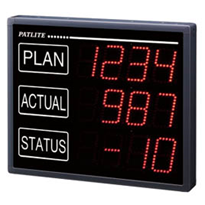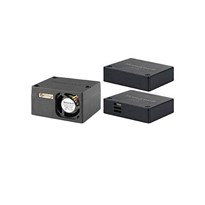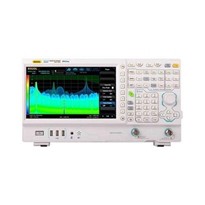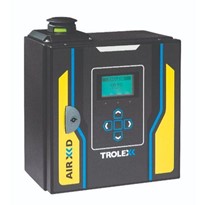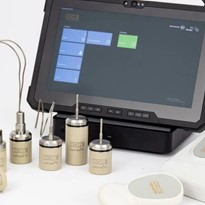What is diesel exhaust emission?
Diesel exhaust emission is made up of two main parts: gases and soot (particles). Each of these, in turn, is made up of many different substances.
-
The gas portion of diesel exhaust is mostly carbon dioxide, carbon monoxide, nitric oxide, nitrogen dioxide, sulphur oxides, and hydrocarbons, including polycyclic aromatic hydrocarbons (PAHs).
-
The soot (particulate) portion of diesel exhaust comprises particles such as carbon, organic materials (including PAHs), and traces of metallic compounds.
Both the gases and the soot of diesel exhaust contain PAHs.
Exhaust from diesel engines brings a complex mixture of soot and gases to the environment (surface or underground). Health concerns about diesel exhaust relate to cancer and other health problems such as lung and heart diseases.
Diesel particulates are very fine. The primary (nuclei) carbon particles have a diameter of 0.01 – 0.08 micron, while the agglomerated particles diameter is in the 0.08 to 1-micron range. As such, diesel particulate matter is almost totally respirable and has a significant health impact on humans.
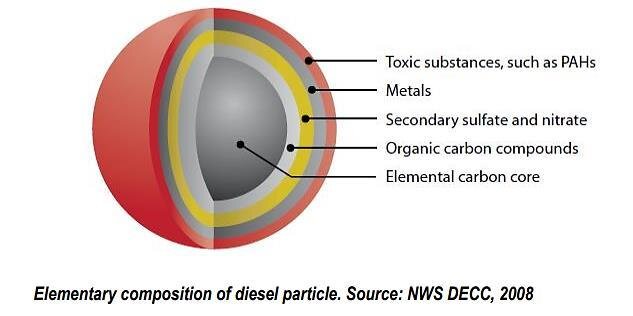
Why should I conduct DPM measurements?
Diesel vehicles are one of the major producers of fine particulate pollution linked to severe lung and heart disease incidence. The World Health Organisation has declared diesel particulate matter to be a Class 1 carcinogen – the highest risk factor category (same category as Asbestos).
In underground mining confines, where diesel engines are the dominant source of portable power, this issue has greater relevance and importance. Fortunately, good maintenance can significantly reduce particulate emissions – by up to 80% in some cases.
Health effects of diesel particulate matter (DPM)
Well, put SIZE MATTERS. Our respiratory systems are great machines that can prevent us from breathing in many dust and harmful gases.
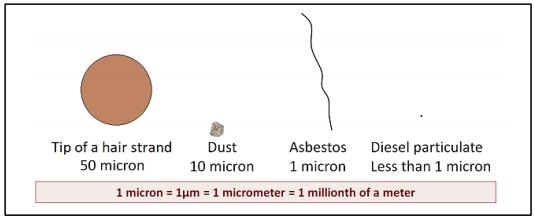
The human body is built to filter out toxins and other harmful agents in the air that are 10 microns or greater in size; however, diesel particulate matter (DPM) is too small to be filtered. It enters all parts of the lung (and moves into other body tissues and the bloodstream).
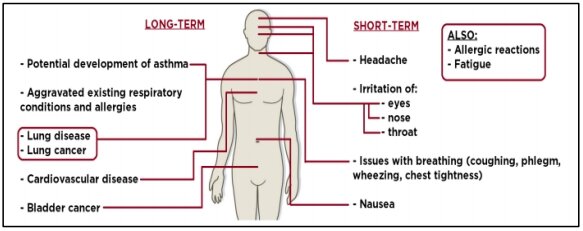
The list of effects associated with diesel exhaust exposure is quite extensive. The diagram points out the most common ones.
It is important to remember that you do not need to suffer any short-term effects to suffer from the long-term ones! You may only begin to realise something is wrong (if at all) years after things take effect in your body.
DPM-RT Diesel Particulate Analyser
Schematic overview
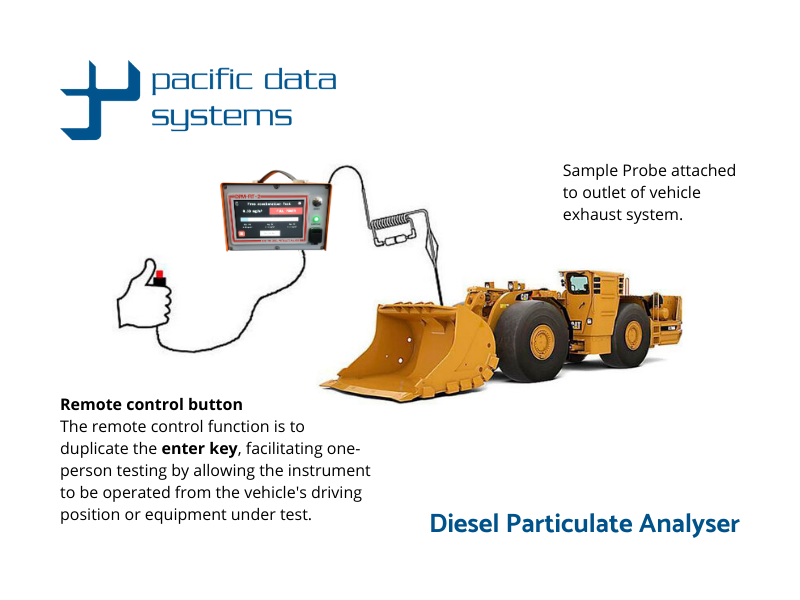
Using advanced laser light-scattering technology, the DPM-RT can accurately and instantly measure particulate mass concentrations in the exhaust from all engine types.
Technical data
| Measurement Method | Laser light-scattering photometry |
|---|---|
| Particle Size Range | |
| Particle Concentration Range | 0.1 to 400 mg/m3 (Elemental Carbon) |
| Resolution | 0.1 mg/m3 |
| Sample Flow | 2.0 lpm (nominal) |
| Range selection | Auto-Ranging |
| Zero Check | Auto-Zero prior to every test |
| Field Calibration | One minute span check (calibration tool supplied) |
| PC Connection | USB |
| Operating Voltage | 12V DC (via external 240/12V adapter), or internal NiMH battery |
| Battery Operation | approx 2 hr operation per charge |
| Operating Current | 2.0 amp (max) |
| Analyser mass | 4kg (approx) |
| Supplied Accessories | Sample hose, sample probe, calibration tool, user manual, 100-240V AC to 12VDC plug pack, NiMh battery charger |
| Maintenance Items | One disposable filter |
Discussion
There is no current OEL for tailpipe emissions expressed in mg/m³ in South Africa. The results were benchmarked against the British Standard BS 6164: “Exposure to diesel engine exhaust emissions should be controlled to prevent exposure to DPM. Primary control should be achieved by reducing emissions at the source along with adequate ventilation. Until HSE issues further guidance, a limit value of 100 µg/m3 as a 15 min time-weighted average”. Having applied this standard, the only machine no. 2 was found to be above the spec.
AMS Haden provides customers with insights into their emissions. A major mine operator in South Africa engaged AMS to perform DPM monitoring on two machines. Testing was done above ground and then again another month after the operation. Results were improved DPM levels on one machine due to improved engine performance. The second machine’s DPM emissions increase, leading to workshop management intervention to investigate the problem. Both levels of DPM were within acceptable limits to continue operation. The value in tailpipe analysis of diesel particulate matter is clear, leading to better environmental hygiene and safer operations for mine workers.
To ensure that effective maintenance on all machines is maintained, it is recommended that the mine consider purchasing a tailpipe emission measuring instrument to measure emission rates more frequently – this could become part of the maintenance schedule and routine measurements from the VOHE Department and the overall DPM Management Strategy. It will also be beneficial for “troubleshooting” conditions.
From the results obtained, all machines tested were found to be within acceptable emission rates.



